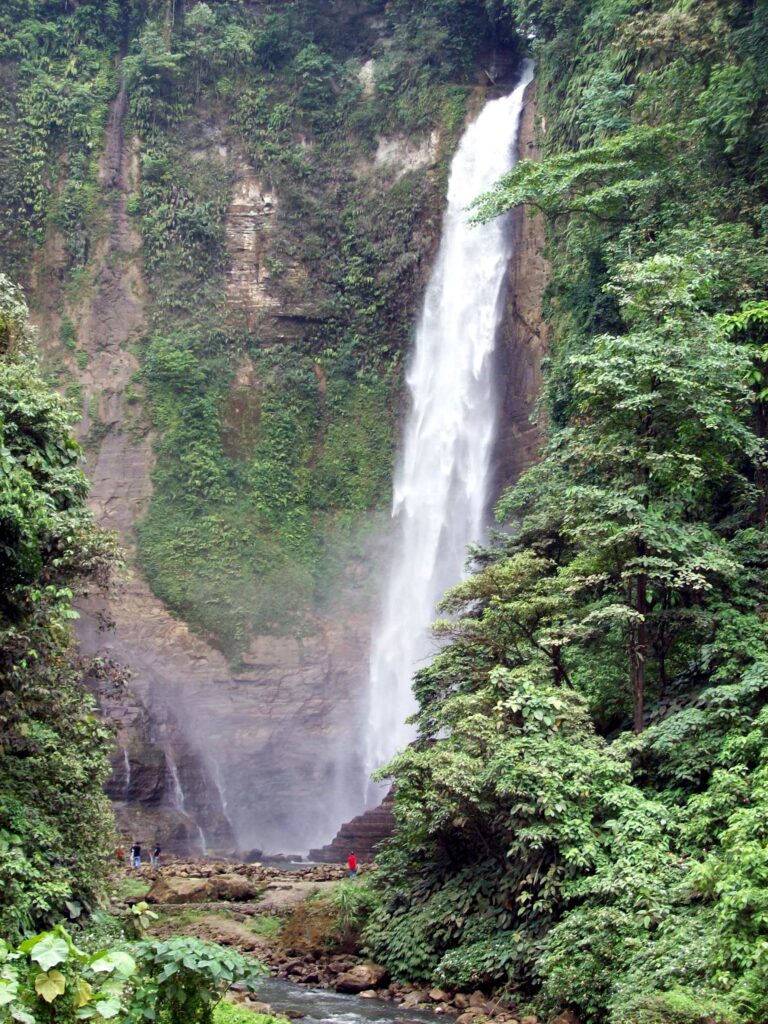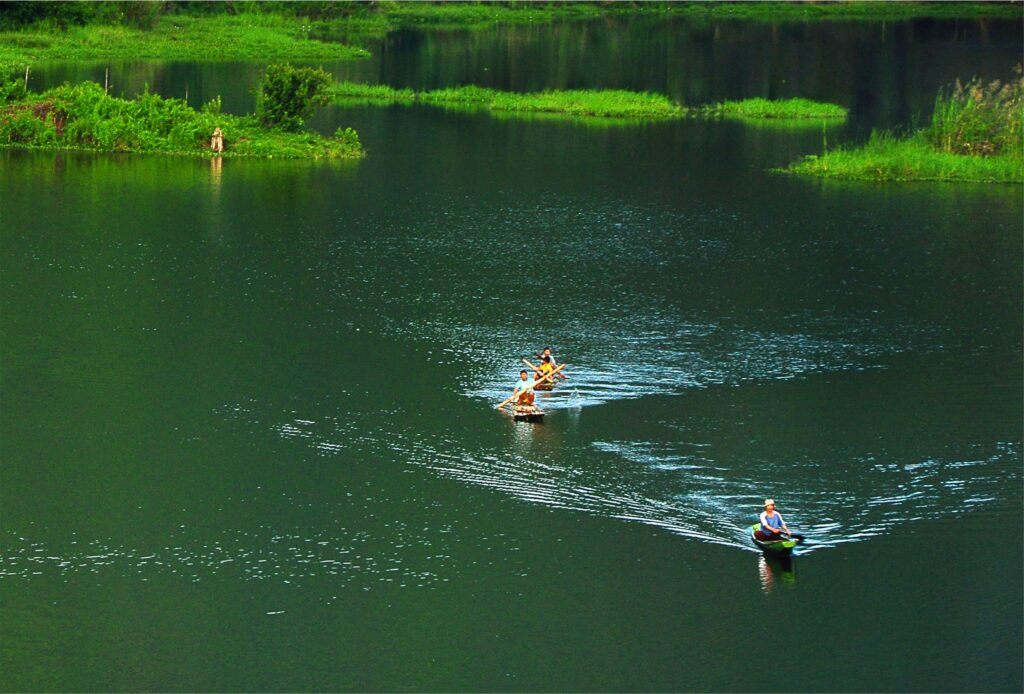Next to air, water is the element most necessary for survival. Water makes up more than 60 percent of our body weight. Proteins make up only 18% while fats encompass 15%, minerals 4%, carbohydrates 2% and vitamins less than one percent.
Our brain contains 74% water, blood contains 83% water, lean muscle has 75% water and bone has 22% water. A lack of water affects everything from our digestive tact to our immune system. It also helps regulate our body temperature.
During a forum convened by the National Academy of Science and Technology done years back, An official of the National Water Resources Board (NWRB) said only 81.4 percent of the country’s households have access to safe potable water supplies. Of the estimated 90 million Filipinos, about 10.674 million – or 18.6 percent of the total population – are “unserved” or doesn’t enjoy water-supply coverage.
A study funded by the European Union found that roughly 30 million people in the country “do not have access to potable water through water supply and distribution operations.”
“Only 77 percent of the rural population and 90 percent of those in urban areas have access to an improved water source, and only 44 percent have direct house connections,” reports Danilo Israel, senior research fellow of the government’s Philippine Institute for Development Studies.
The Philippine Human Development Report a few years back said that one of every five residents in 24 provinces quaffs water from dubious sources. These provinces were: Sulu, Maguindanao, Tawi-Tawi, Basilan, Masbate, Zamboanga del Norte and Sur, Negros Oriental and Occidental, Sultan Kudarat, Palawan, Camarines Norte, Leyte, Misamis Occidental, Apayao, Quezon, North Cotabato, Bukidnon, Iloilo, Guimaras, Agusan del Sur, Nueva Vizcaya, Ilocos Norte and Benguet.
In the 1950s, the Philippines had as much as 9,600 cubic meters of clean water per person, according to Dr. Rafael D. Guerrero, former head of the Philippine Council for Aquatic and Marine Research and Development. Four decades later, Filipinos must make do with little more than a third for that volume – 3,300 cubic meters per capita.
Today, the Philippines ranks second from the lowest among Southeast Asian countries in terms of per capita water availability per year with only 1,907 cubic meters. Thailand is at the bottom, with 1,854 cubic meters. Vietnamese have more than twice what Filipinos get: 4,591 cubic meters.
Water crisis looms. Israel, author of the paper, Water Pollution Impedes Management of Freshwater for Human Consumption, said the country’s water demand is expected to grow from 43 million cubic meters per year in 2000 to 88 million cubic meters by 2025. This makes “the competition for potable water even more intense.”
The water crisis is more transparent in Metro Manila, home to more than 10 million people. “For many residents in Metro Manila, coping with a ‘water supply crisis’ has been part of their daily woes for years,” says the databank and research center of the IBON Foundation Inc.
Metro Manila was one of the nine major cities listed as “water-critical areas” in a study by the Japan International Cooperation Agency in 1991. The other eight cities were Metro Cebu, Davao, Baguio, Angeles, Bacolod, Iloilo, Cagayan de Oro and Zamboanga.
“Metro Manila is currently experiencing water deficits,” a World Bank report states. “Although for some cities like Baguio, which have no shortfall considering current demand, it is know that major water shortages do occur during the summer.”
Water crisis seems unthinkable for a country with 7,107 islands and surrounded by several bodies of water. “The image of a water-rich Philippines is a mirage,” Gregory C. Ira, former head of the water equity in the lifescape and landscape study (WELLS) of the International Institute of Rural Reconstruction, once pointed out. “There is a water crisis in the Philippines, one of the wettest countries of Southeast Asia.”
Several factors contribute to water shortage, including variability in climate, demographic patterns, and unsustainable water-use patterns. In some urban centers of the country where water is available, 50 percent never reaches the designated consumers due to leakage, theft and poor management. These identified problems are compounded by the degradation of water resource base.
For instance, many of the country’s largest cities are located in watersheds (also called catchment areas or drainage basin) where all available water is being used. “Land use and vegetative cover in the watershed are very important because they affect water flow and water quality,” explained Patrick Durst, senior forestry officer of the regional office Food and Agriculture Organization in Bangkok, Thailand.
An example of a good watershed is a healthy forest. “This is because forests can help to relegate the flow of water,” Durst told Philippine Graphic. A recent report released by the Department of Environment and Natural Resources (DENR) said that 90 percent of the 99 watershed areas in the country are “hydrologically critical” due to their degraded physical condition as a result of loss of forest cover.


Even if the country has a health forest, it has to contend with another problem: agriculture. “Water for agriculture is critical for food security,” points out Dr. Mark W. Rosegrant, a senior research fellow at the Washington-based International Food Policy Research Institute (IFPRI).
“The link between water and food is strong,” says Dr Lester R. Brown, president of Earth Policy Institute, also based in Washington, D.C. “We drink, in one form or another, nearly 4 liters of water per day. But the food we consume each day requires at least 2,000 liters to produce, 500 times as much.”
River pollution also contributes to the country’s current water woes. A report from the Asian Development Bank said that 16 rivers are now considered “biologically dead” during dry months. Some 48 percent of water pollution come from domestic waste, 37 percent from agricultural waste, and 15 percent from industrial waste.
In the rural areas, the major source of water pollution is agricultural farms. These are in the forms of organic wastes (such as decayed plants, livestock manure, and dead animals), soil loss (suspended soils and erosion), and pesticides and fertilizer residues.
In major coastal cities, many are encountering saltwater intrusion problems in their groundwater resources due to over extraction of fresh water. Take the case of Cebu which “can always become the country’s salt capital,” to quote the words of veteran journalist Juan Mercado.
Cebu reportedly pumps 275,000 cubic meters daily. Its coastal aquifer can recharge less than half. Demand from population and industry will more than double by 2030. This “over-mining” permits salt water to seep in. The damage is irreversible. It takes 500 years or so to flush tainted underground reservoirs.
“The saline water edge has already penetrated three kilometers inland,” noted the March 1995 Cebu Water Resources Potential study. “It is moving at a rate of 100 to 150 meters per year.”
But the biggest culprit of water crisis is still the surging population. “Water resources and population are closely connected,” argues Don Hinrichsen, an environmental journalist who has done studies on water crisis for Johns Hopkins University and Woodrow Wilson International Center for Scholars.
“The rapid urbanization of the Philippines, with more than 2 million being added to the urban population annually, is having a major impact on water resources,” notes the Asian Development Bank (ADB) in its recently-released,Asian Water Development Outlook 2007.
The looming water crisis is for real. The Aquino administration is doing its best to address the issue. In fact, according to Tabios, the president is soon to abolish the NWRB to organize a superbody called National Water Resources Management Office (NWRMO).
The NWRMO is designated as “mainly responsible for the management and protection of the country’s water resources for domestic water supply, sanitation, irrigation, hydropower, fisheries, aquaculture, flood control, navigation and recreation, including the enhancement and maintenance of water quality, conservation of watershed, control of water pollution and environmental restoration, without compromising the natural ecosystems’ functions and services.”
Roger Bethelot, former consultant of the United Nations Development Program, said it well: “There will be no peace in the world unless we are prepared to insure it now by tackling the problems of water, which in some areas are catastrophic.”
Meanwhile, Dr. Sandra Postel, director of the Massachusetts-based Global Water Policy Project, believes water problems will be alongside with climate change as a threat to the human future, and global warming will worsen water problems. “Although the two are related, water has no substitutes,” she explains. “We can transition away from coal and oil to solar, wind and other renewable energy sources. But there is no transitioning away from water to something else.”
“Water is the most precious asset on Earth,” Postel points out. It covers over 70 percent of the earth’s surface and is a major force in controlling the climate by storing vast quantities of heat. About 97.5 percent of all water is found in the ocean and only the remaining 2.5 percent is considered fresh water. Unfortunately, 99.7 percent of that fresh water is unavailable, trapped in glaciers, ice sheets, and mountainous areas.
Water is drawn in two fundamental ways: from wells, tapping underground sources of water called aquifers; or from surface flows – that is, from lakes, rivers, and man-made reservoirs. Water is drawn in two fundamental ways: from wells, tapping underground sources of water called aquifers; or from surface flows – that is, from lakes, rivers, and man-made reservoirs.
“Water, water everywhere,” wrote Samuel Taylor Coleridge in The Rime of the Ancient Mariner, “but not a drop to drink.”

